Crafting a formal complaint letter can be a crucial step in addressing concerning employee behavior. It's important to clearly outline the issue, provide specific examples, and express the impact of this behavior on the workplace. By doing so, you not only help ensure a professional environment but also encourage accountability and positive change. If you're interested in learning how to structure your complaint effectively, read on for helpful tips and a comprehensive template.
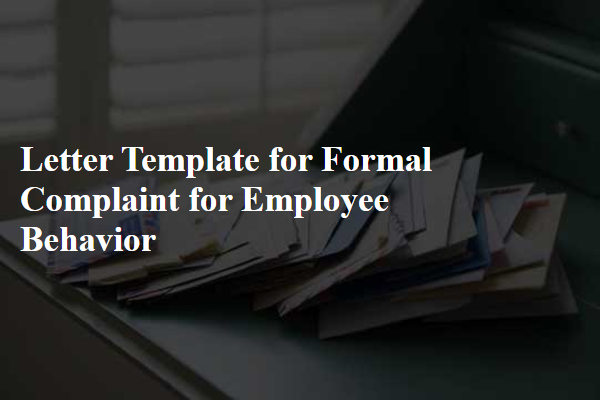
Subject Line and Recipient Details
In a formal complaint regarding employee behavior, the subject line should succinctly capture the essence of the issue, ensuring clarity and urgency. For example, "Formal Complaint Regarding Employee Conduct - [Employee Name or ID]" or "Concerns About Unprofessional Behavior by [Employee Name]." The recipient details must include the appropriate management or HR personnel, ensuring the right department addresses the complaint. This could be listed as "To: [Manager's Name], [Job Title], [Company Name], [Company Address], [City, State, Zip Code]." Including a date at the top of the letter, such as "[Date]", establishes a formal context and timeline for the complaint.
Clear Description of Behavior
Unprofessional behavior observed in the workplace can severely impact overall productivity and team morale. An employee displayed consistent tardiness (arriving more than 30 minutes late daily), failing to adhere to established working hours (9 AM to 5 PM), which disrupted team dynamics. Instances of derogatory comments directed at colleagues during meetings, specifically during a team briefing on April 12, 2023, created an uncomfortable atmosphere. Such unconstructive interactions not only undermine teamwork but also contribute to a toxic work environment, affecting the mental well-being of staff members. Addressing these issues is crucial for maintaining a professional workplace where all employees feel respected and valued.
Impact on Work Environment
An incident of unprofessional behavior can significantly impact the work environment, leading to decreased morale among employees. A specific event occurred on September 15, 2023, in the break room of XYZ Corporation, where an employee exhibited aggressive demeanor and used inappropriate language towards colleagues. This behavior contributed to a tense atmosphere, inhibiting open communication and teamwork. Negative reinforcement from such actions can lower productivity levels and create a culture of fear within the office. Ongoing issues of this nature can threaten employee retention and overall company performance, highlighting the urgent need for company intervention and support for workplace standards.
Reference to Company Policy
Inappropriate employee behavior can severely impact workplace morale and productivity, violating established company policies. Instances of unprofessional conduct, such as verbal misconduct or harassment, undermine a respectful workplace environment, leading to potential breaches of employee rights as outlined in the company handbook. Specific sections of the company policy, particularly those addressing workplace conduct and mutual respect, emphasize zero tolerance for such behavior. Documentation of incidents, including dates, times, and involved parties, is crucial for an effective complaint process. Proper channels for escalation, as stated in the company guidelines, must be followed to ensure a thorough investigation and resolution of the matter.
Desired Resolution or Action
An effective formal complaint regarding employee behavior may involve multiple elements, including specific incidents and expectations for resolution. For instance, an employee at a company such as ABC Corporation, located in New York, may have exhibited unprofessional conduct during a team meeting on September 15, 2023. The incident involved the employee raising their voice and using derogatory language towards a colleague, creating a hostile work environment. Desired resolution could include a formal apology from the employee, training on workplace etiquette and communication, and a review of the company's behavioral policies to prevent future occurrences. Additionally, requesting a follow-up meeting with HR to discuss the incident and its implications for team dynamics can ensure transparency and accountability.
Letter Template For Formal Complaint For Employee Behavior Samples
Letter template of formal complaint regarding inappropriate employee conduct.
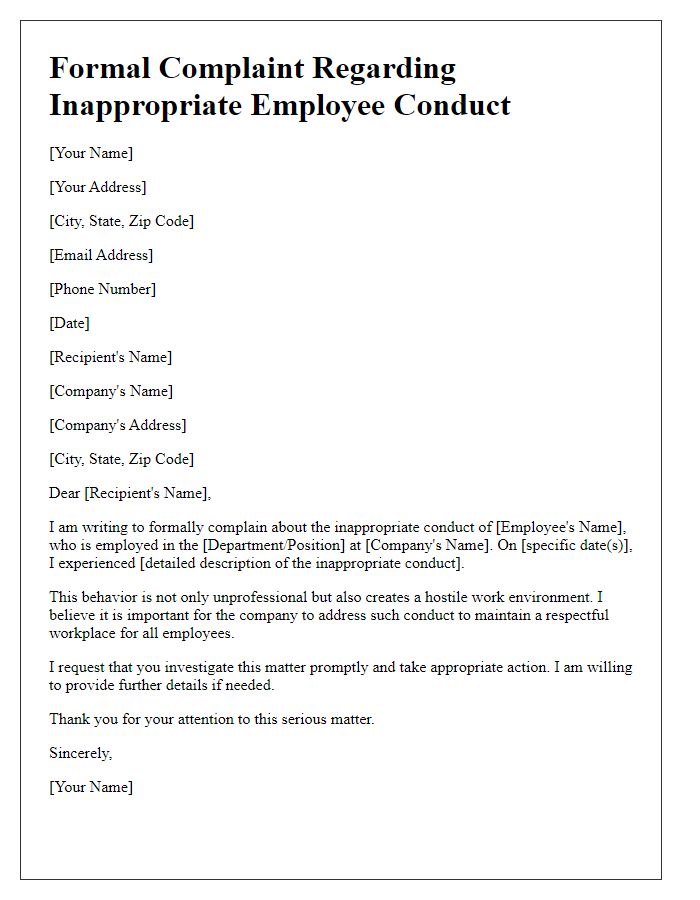
Letter template of formal complaint about unprofessional behavior by staff.
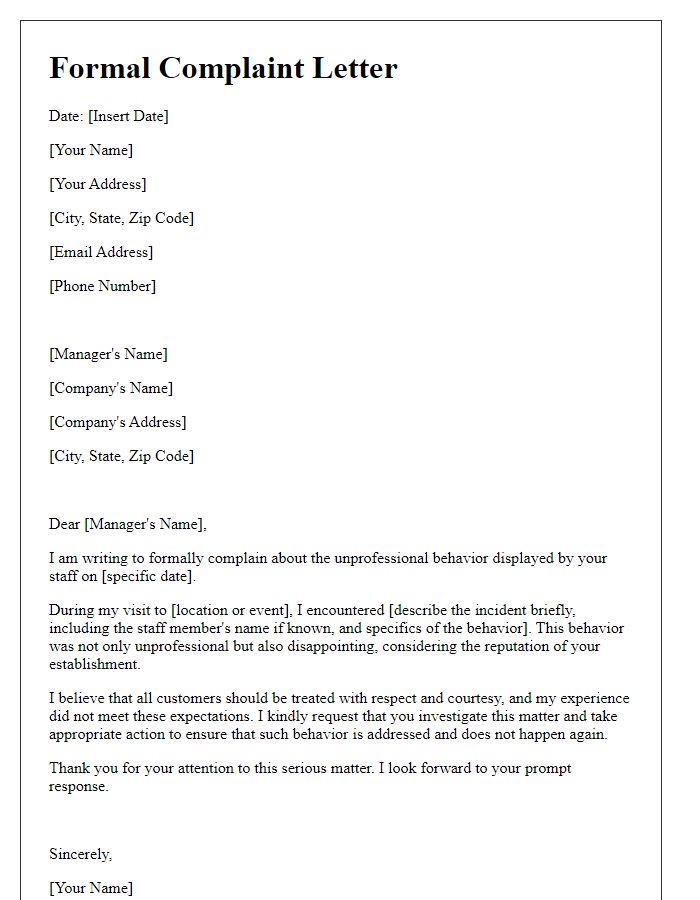
Letter template of formal complaint due to disrespectful actions by an employee.
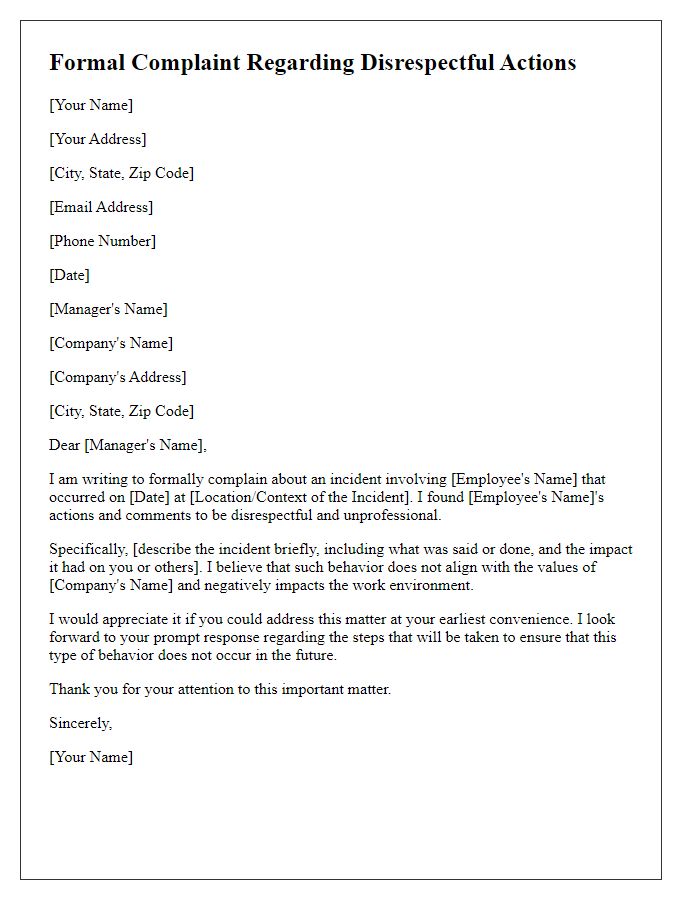
Letter template of formal complaint in relation to employee’s unhelpful attitude.
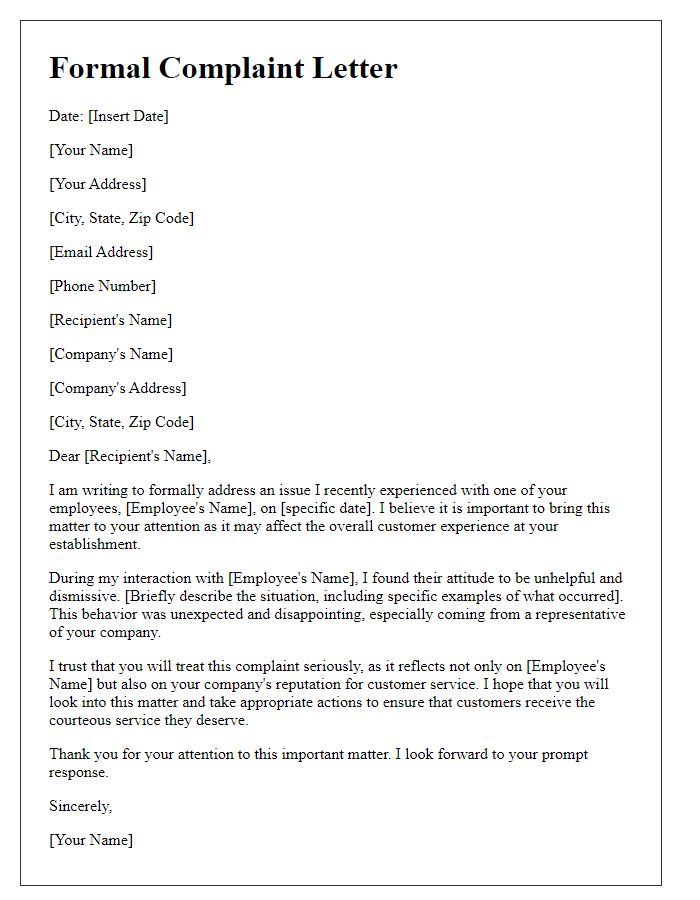
Letter template of formal complaint stemming from rude customer service by staff.
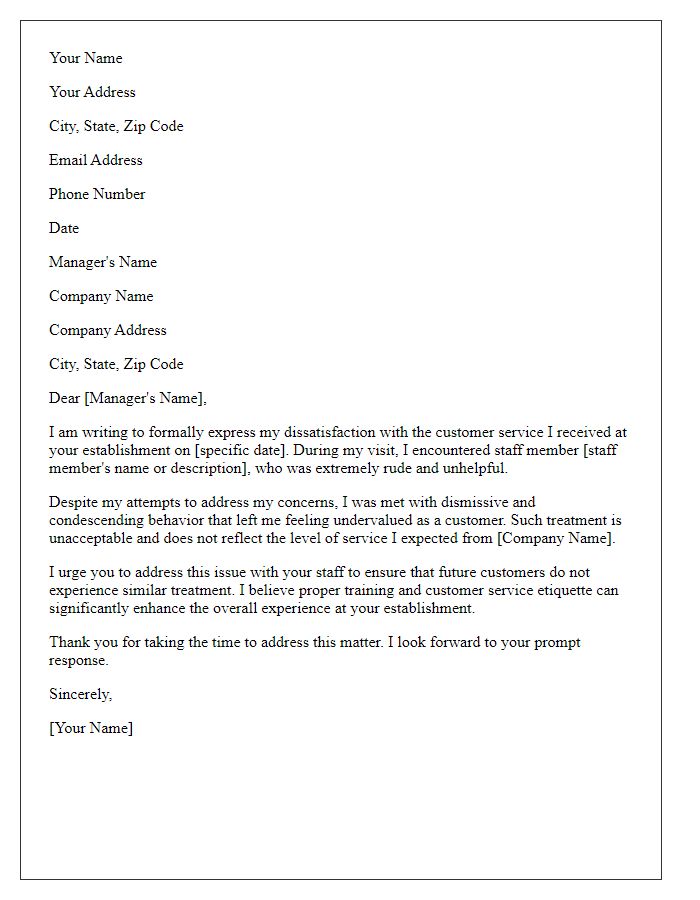
Letter template of formal complaint regarding lack of professionalism from an employee.
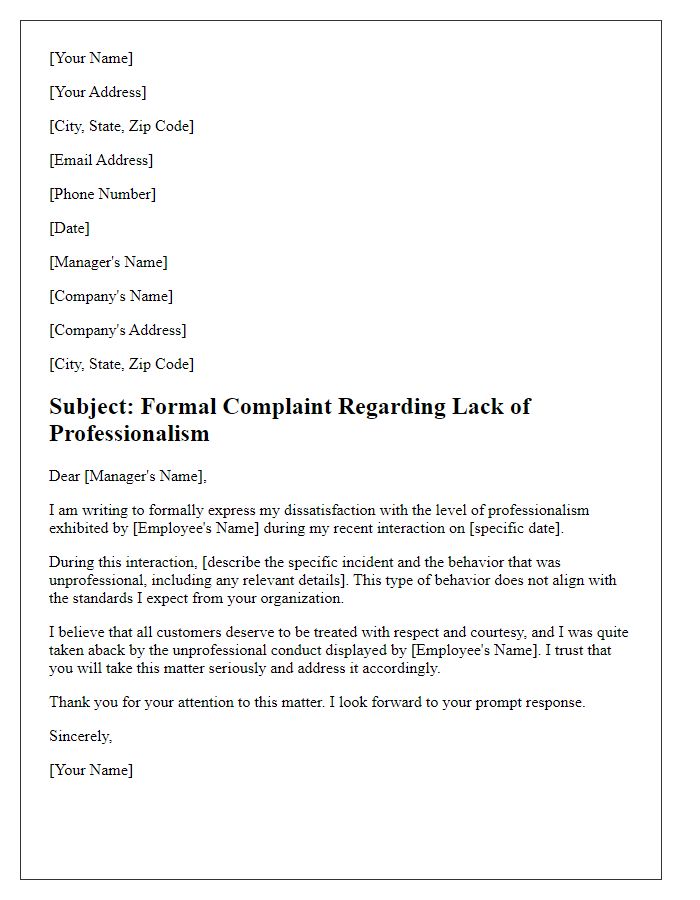
Letter template of formal complaint over discriminatory remarks from a staff member.
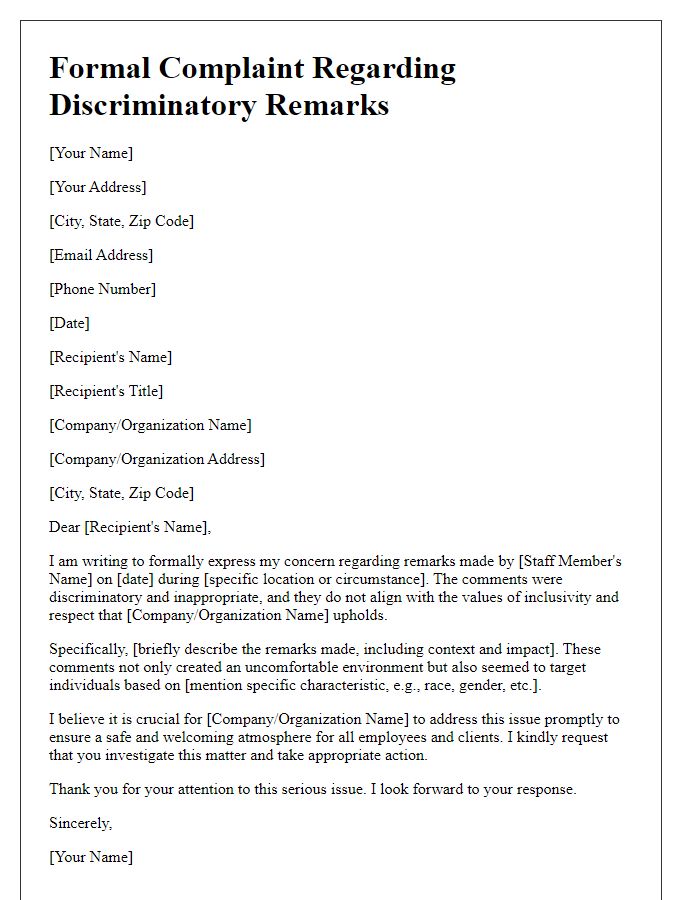

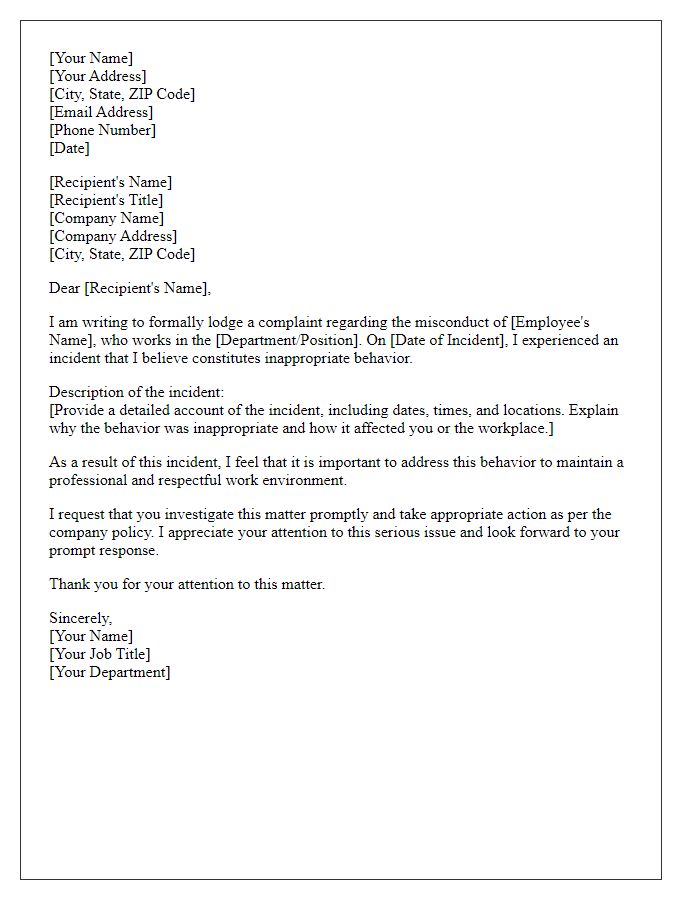
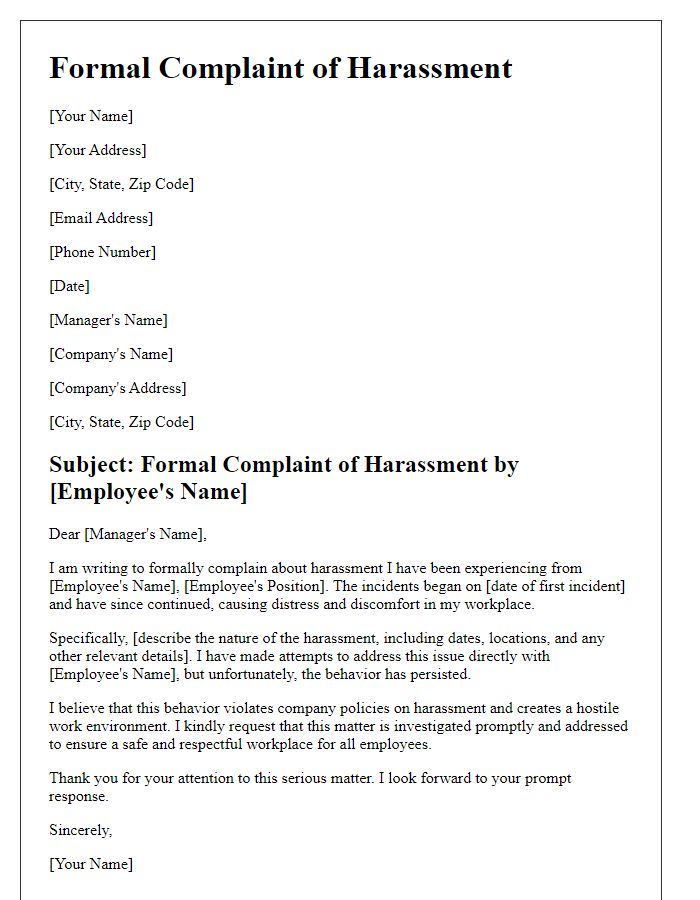
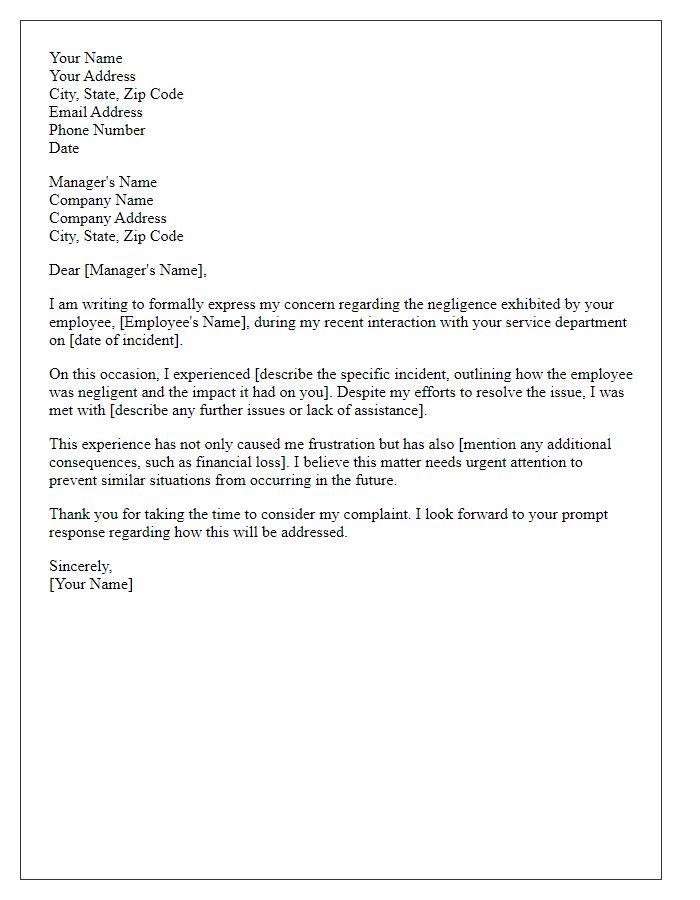


Comments